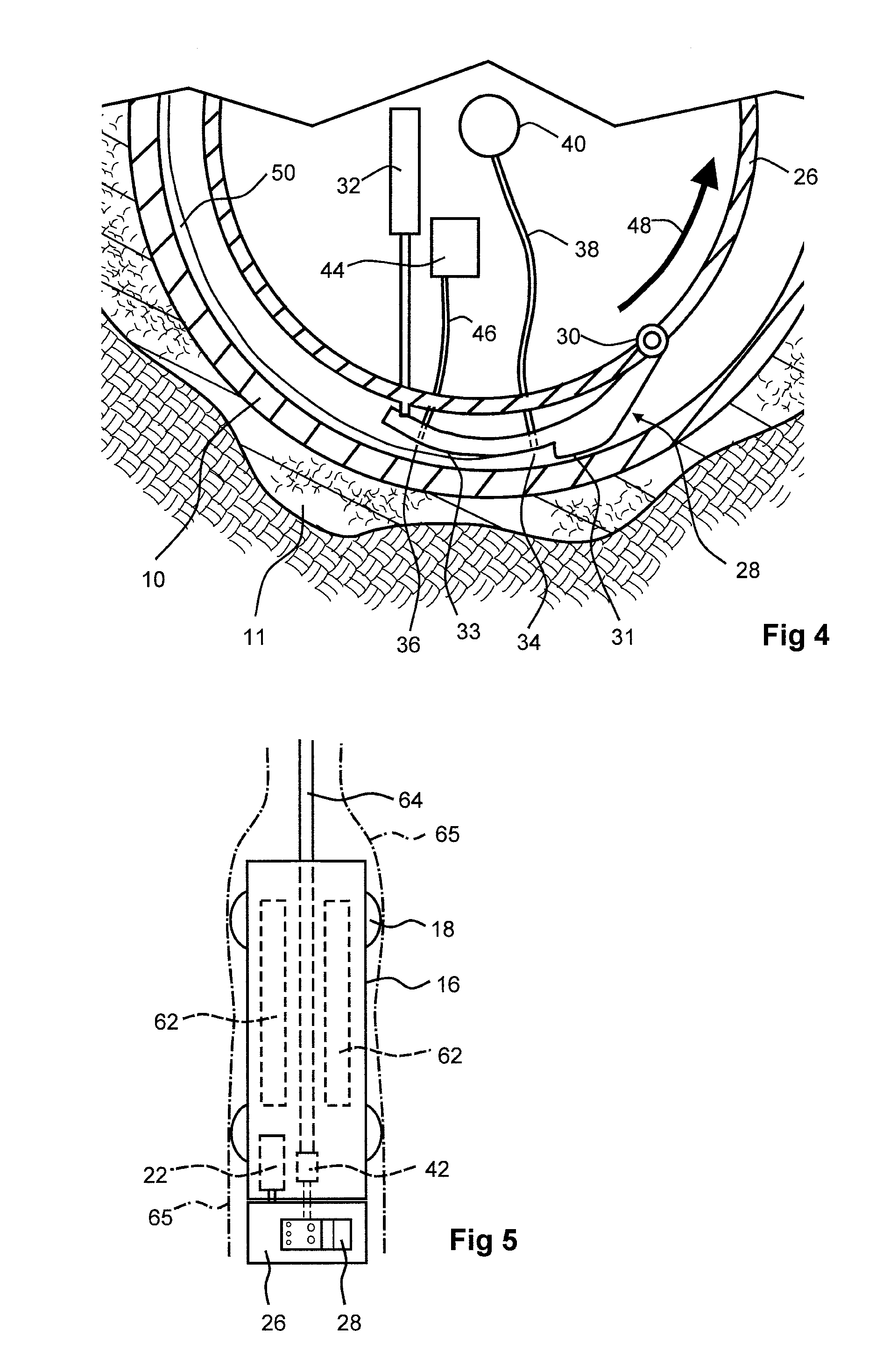Lining of wellbore tubing
a technology of tubing and wellbore, which is applied in the direction of sealing/packing, drilling pipes, and wellbore/well accessories, etc., can solve the problems of challenging environment of wellbore tubing, and achieve the effect of strengthening the surface of the lining
- Summary
- Abstract
- Description
- Claims
- Application Information
AI Technical Summary
Benefits of technology
Problems solved by technology
Method used
Image
Examples
example 1
[0086]Some laboratory experiments were carried out to demonstrate features of embodiments of the present invention. Samples of polymerisable liquid composition were placed in an I-shaped plastic mould and polymerization was initiated by exposure to the radiation from a 6 W UV lamp (manufactured by UV products, and purchased from Fisher Scientic UK). The lamp was dual wavelength, emitting at wavelengths of 254 nm or 365 nm.
[0087]Curing kinetics were followed using a Nicolet FTIR (Fourier Transform Infra-Red) spectrometer with a ZnSe ATR (attenuated total reflection) plate. The UV lamp was placed in the access port on the spectrometer, and the plate was irradiated during spectral acquisition. Changes in the height of the 1634 cm peaks was followed, this being the C═C stretch of the acrylate group. As the, polymerization reaction proceeded the C═C bonds were eliminated and the peak height dropped. It was observed that the polymerization reaction took place over a period of ten minutes ...
example 2
[0102]A laboratory experiment was carried out to examine the effect of radiation intensity on speed of reaction. Bis phenol A ethoxylate diacrylate containing 0.2% (bis (eta 5-2,4-cyclopentadien-1-yl)bis [2,6-difluoro-3-(1H-pyrrol-1-yl)phenyl]titanium as photoinitiator was irradiated with white light having a peak wavelength of 555 nm. The rate of reaction was followed using the Fourier Transform Infra-Red spectrometer mentioned in Example 1 to monitor the decrease of the vinyl (1,400 cm−1) peak area, relative to the carbonyl (1,700 cm−1) peak area. Irradiation was at either 1,200 klux or 120 klux (equivalent to 190 or 19 mW / cm−2, respectively). A plot of the extent of reaction against time is shown as FIG. 13. Not all acrylate groups react because the polymer chains cease to grow when the reaction mixture becomes solid, but it can be seen that the higher intensity of illumination leads more rapidly to a similar level of completion, with the reaction being largely complete in less t...
example 3
[0103]Laboratory apparatus for applying polymerisable composition to the interior of a cylinder was constructed to have a dispensing outlet for liquid composition, followed by an outlet for ultraviolet radiation, similarly to the arrangement shown in FIGS. 1 to 4. This apparatus was used to apply a polymerisable liquid composition as shown in the following table to the interior of a clear acrylic cylinder and direct ultraviolet radiation onto the composition as it was applied. During application of the composition there was rotation and axial movement of the apparatus relative to the cylinder (For convenience in construction the cylinder was move and the apparatus was fixed). The cylinder was then inspected and found to have a band of rigid polymer extending as a helix adhered to its interior surface.
[0104]The polymerisable liquid composition contained
[0105]
ChemicalWeight %Bisphenol A (1.5) ethoxy diacrylate73.2Polyethyleneglycol diacrylate Mol. wt24.4260pentaerythritol tetraacrylat...
PUM
| Property | Measurement | Unit |
|---|---|---|
| wavelength | aaaaa | aaaaa |
| temperatures | aaaaa | aaaaa |
| wavelength range | aaaaa | aaaaa |
Abstract
Description
Claims
Application Information
 Login to View More
Login to View More - R&D
- Intellectual Property
- Life Sciences
- Materials
- Tech Scout
- Unparalleled Data Quality
- Higher Quality Content
- 60% Fewer Hallucinations
Browse by: Latest US Patents, China's latest patents, Technical Efficacy Thesaurus, Application Domain, Technology Topic, Popular Technical Reports.
© 2025 PatSnap. All rights reserved.Legal|Privacy policy|Modern Slavery Act Transparency Statement|Sitemap|About US| Contact US: help@patsnap.com



